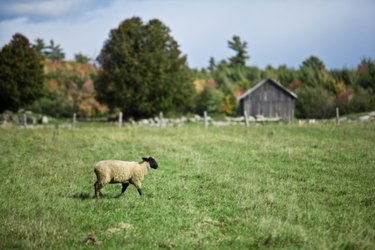
Grass is a versatile type of plant. Pasture grass grows to an average mature height between 2 and 3 feet tall. In its natural habitat, all types of grass help guard against soil erosion, insulate the ground and supply a source of food for wildlife. Like the wild prairie grasses, pasture grasses fulfill these same purposes while also providing a livestock feed for foraging or bailing.
Considerations
Video of the Day
The best type of grass for a pasture depends on the soil, climate and intended use. When selecting prairie grass consider the amount of natural precipitation to avoid planting a variety that requires excessive amounts of supplemental irrigation. Grazing requirements are also an important consideration. While cattle and sheep may graze on low-quality forages, horses often require highly nutritious grasses, such as Kentucky bluegrass. Compounds in sudangrass and sorghum-sudangrass hybrids may cause muscle weakness and urinary problems in horses.
Video of the Day
Native Varieties
Grass types that are native to your area are adapted to the soil, climate and moisture levels. Varieties like Haskell sideoats grama grass, switchgrass, native bluestem and Lometa Indiangrass are native to many areas of the U.S. Native grasses require less care and tend to reseed themselves at a higher rate than introduced species of prairie grasses.
Cool Season
Cool season grasses grow best in climates with temperate summers and cold winters. These grasses begin growing earlier in the year, providing forage during the late winter and early spring. Grown as annual grasses, cool season grasses make a suitable groundcover in the warm, southern states during the mild winter months. Cool season grasses include bromegrass, timothy grass and orchard grass. These grasses grow quickly to provide quality forage during the second year.
Warm Season
Warm season grasses tolerate the summer heat better than cool season grasses, especially in hot climates. They begin greening up later in the spring than cool season varieties and reach their peak production during the hottest months of summer. Alamo switchgrass, Bermuda grass and bahia grass are all types of warm season pasture grasses.